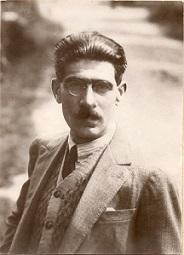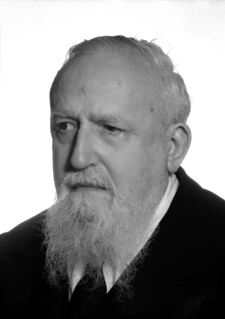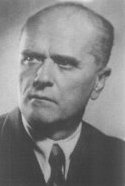|
Manifesto Of The Anti-Fascist Intellectuals
The Manifesto of the Anti-Fascist Intellectuals, written by Benedetto Croce in response to the Manifesto of the Fascist Intellectuals by Giovanni Gentile, sanctioned the irreconcilable split between the philosopher and the Fascist government of Benito Mussolini, to which he had previously given a vote of confidence on 31 October 1922. The idea of an anti-Fascist manifesto came to Giovanni Amendola, who wrote to Croce, a proclaimed anti-Fascist, for his opinions on 20 April 1925: Croce replied a day later, saying that he would be more than willing to, but that the document ought to be short, "so as not to alienate the common folk." The manifesto was published by the liberal newspaper '' Il Mondo'' and by the Catholic newspaper ''Il Popolo'' on 1 May 1925, which was Workers' Day, symbolically responding to the publication of the Fascist manifesto on the '' Natale di Roma'', the founding of Rome (celebrated on 21 April). The Fascist press claimed that the Crocian manifesto was " ... [...More Info...] [...Related Items...] OR: [Wikipedia] [Google] [Baidu] |
Manifesto Intell Antifascisti 1 Maggio 1925 Popolo (2)
A manifesto is a written declaration of the intentions, motives, or views of the issuer, be it an individual, group, political party, or government. A manifesto can accept a previously published opinion or public consensus, but many prominent manifestos—such as ''The Communist Manifesto'' (1848) and those of various artistic movements—reject accepted knowledge in favor of a new idea. Manifestos relating to religious belief are generally referred to as ''creeds'' or ''confessions of faith''. Etymology The Italian word , itself derived from the Latin , meaning "clear" or "conspicuous". Its first recorded use in English is from 1620, in Nathaniel Brent's translation of the Italian from Paolo Sarpi's ''History of the Council of Trent'': "To this citation he made answer by a Manifesto" (p. 102). Similarly, "They were so farre surprised with his Manifesto, that they would never suffer it to be published" (p. 103).''Oxford English Dictionary,'' s.v. “manifesto (n.),� ... [...More Info...] [...Related Items...] OR: [Wikipedia] [Google] [Baidu] |
Antonio Banfi
Antonio Banfi (Vimercate, 30 September 1886 – Milano, 22 July 1957) was an Italian philosopher and Senate of the Republic (Italy), senator. He is also noted for founding the Italian philosophical school called critical rationalism. Although influenced by the neo-Kantians in Marburg and Edmund Husserl, whom he knew personally, Banfi moved away from idealism and instead focused on Marxism, in particular historical materialism. Banfi joined the Italian Communist Party in 1947. He was elected to the Italian Senate in 1948 and again in 1953. Banfi was a chair of the University of Milan's History of Philosophy department. Among his students were Dino Formaggio and Mario Dal Pra. References Bibliography * Garin, E., "Banfi, Antonio" in Brochert, D. M. (ed.), ''Encyclopedia of Philosophy'', Second Edition, vol. 1 (Thomson Gale, 2006), p. 476. * Garin, E., History of Italian Philosophy', vol. 2 (Rodopi, 2008), p. 1292. * Guiat, C., The French and Italian Communist Parties: ... [...More Info...] [...Related Items...] OR: [Wikipedia] [Google] [Baidu] |
Attilio Momigliano
Attilio, one of the legendary martyrs of the Theban Legion, is venerated as a saint in the area of Trino Vercellese, in Piedmont, north-west Italy and commemorated on 28 June. However his cult is no longer officially recognized by the Roman Catholic Church and he has no entry in its current martyrologies. He has been depicted with a flag, a helmet and the palm of martyrdom The palm branch, or palm frond, is a symbol of victory, triumph, peace, and eternal life originating in the ancient Near East and Mediterranean world. The palm ''( Phoenix)'' was sacred in Mesopotamian religions, and in ancient Egypt represente .... External links Sant’Attilio, santiebeati.it 3rd-century Christian saints Italian Roman Catholic saints {{Early-Christianity-stub ... [...More Info...] [...Related Items...] OR: [Wikipedia] [Google] [Baidu] |
Tullio Levi-Civita
Tullio Levi-Civita, (; ; 29 March 1873 – 29 December 1941) was an Italian mathematician, most famous for his work on absolute differential calculus ( tensor calculus) and its applications to the theory of relativity, but who also made significant contributions in other areas. He was a pupil of Gregorio Ricci-Curbastro, the inventor of tensor calculus. His work included foundational papers in both pure and applied mathematics, celestial mechanics (notably on the three-body problem), analytic mechanics (the Levi-Civita separability conditions in the Hamilton–Jacobi equation) and hydrodynamics. Biography Born into an Italian Jewish family in Padua, Levi-Civita was the son of Giacomo Levi-Civita, a lawyer and former senator. He graduated in 1892 from the University of Padua Faculty of Mathematics. In 1894 he earned a teaching diploma after which he was appointed to the Faculty of Science teacher's college in Pavia. In 1898 he was appointed to the Padua Chair of Rational Me ... [...More Info...] [...Related Items...] OR: [Wikipedia] [Google] [Baidu] |
Giorgio Levi Della Vida
Giorgio Levi Della Vida (22 August 1886 in Venice – 25 November 1967 in Rome) was an Italian Jewish linguist whose expertise lay in Hebrew, Arabic, and other Semitic languages, as well as on the history and culture of the Near East. Biography Born in Venice to a Jewish family originally from Ferrara, he moved with them first to Genoa and then to Rome, from whose university he graduated in 1909 with the Hebraist Ignazio Guidi. Immediately after graduation, he participated in numerous research expeditions to Cairo, Athens (for the Italian School of Archaeology), and Crete. In 1911 he returned to Rome, where he worked with Leone Caetani, historian of the Near East, on the editorial staff of the ''Annals of Islam''. He developed strong ties of friendship with Michelangelo Guidi, son of Ignazio and an illustrious Islamist himself, as well as with Gaetano De Sanctis, Ernesto Buonaiuti, Giorgio Pasquali, Luigi Salvatorelli, and the Barnabite priest Giovanni Semeria. Since h ... [...More Info...] [...Related Items...] OR: [Wikipedia] [Google] [Baidu] |
Beppo Levi
Beppo Levi (14 May 1875 – 28 August 1961) was an Italian mathematician. He published high-level academic articles and books on mathematics as well as on physics, history, philosophy, and pedagogy. Levi was a member of the Bologna Academy of Sciences and of the Accademia dei Lincei. Early years Beppo Levi was born on May 14, 1875, in Turin, Italy to a Jewish family. He was an older brother of Eugenio Elia Levi. Levi obtained his ''laurea'' in mathematics in 1896 at age 21 from the University of Turin under Corrado Segre. He was appointed an assistant professor at the University of Turin three months later and shortly thereafter became a full-time Scholar. Levi was appointed Professor at the University of Piacenza in 1901, at the University of Cagliari in 1906, at the University of Parma in 1910, and finally at the University of Bologna in 1928. The years that followed his last appointment saw the rise of Benito Mussolini's power and of antisemitism in Italy, and Levi, ... [...More Info...] [...Related Items...] OR: [Wikipedia] [Google] [Baidu] |
Giustino Fortunato
Giustino Fortunato (4 September 1848 – 23 July 1932) was an Italian historian and politician. Biography He was born in Rionero in Vulture (Basilicata), from a bourgeois family. His great-uncle Giustino Fortunato senior (1777-1862) was the prime minister of the Kingdom of the Two Sicilies from 1849 to 1852. Fortunato studied at the Jesuit College and then studied law at the university in Naples. After the degree, he founded the journals ''Unità Nazionale'' and ''Patria''. In May 1880, he was elected to the Italian Chamber of Deputies, until 1909 when he was appointed Senator until he retired from active politics in 1919. Fortunato, along with other politicians like Pasquale Villari, Francesco Saverio Nitti, Gaetano Salvemini formed a group of socio-political thinkers called “meridionalisti” (“southernists”), in order to solve the economic problems of southern Italy after the Italian unification. Fortunato and others made the strong claim that the economic policies of ... [...More Info...] [...Related Items...] OR: [Wikipedia] [Google] [Baidu] |
Luigi Einaudi
Luigi Numa Lorenzo Einaudi (; 24 March 1874 – 30 October 1961) was an Italian politician, economist and banker who served as President of Italy from 1948 to 1955 and is considered one of the founding fathers of the 1946 Italian institutional referendum, Italian Republic. Early life Einaudi was born to Lorenzo Einaudi and Placida Fracchia in Carrù, in the province of Cuneo, Piedmont. In Turin he attended Liceo classico Cavour and completed his university studies; in the same years he became acquainted with Socialism, socialist ideas and collaborated with the magazine ''Critica sociale'', directed by the socialist leader Filippo Turati. In 1895, after overcoming financial difficulties, he graduated in jurisprudence, and was later appointed as a professor in the University of Turin, the Polytechnic University of Turin and the Bocconi University of Milan. As an economist, Einaudi belonged to the Classical economics, classical school of economics in addition to Pietro Campilli, E ... [...More Info...] [...Related Items...] OR: [Wikipedia] [Google] [Baidu] |
Gaetano De Sanctis
Gaetano De Sanctis (15 October 1870, Rome – 9 April 1957) was an Italian ancient historian, classicist and lifetime senator (1950-1957). As the collection of his 'scritti minori' illustrates, his scope of scholarship ranged from Homer down to the Byzantine Empire. He was the influential teacher of Arnaldo Momigliano. His work 'Storia dei Romani' could be considered a monumental work. De Sanctis became chair of ancient history desk at the University of Rome in 1929. In 1931, he was one of only twelve professors who refused to swear a decreed oath of allegiance to the Fascist regime ( Giuramento di fedeltà al fascismo) under Benito Mussolini. As a result, his professional career was severely curtailed until after World War II. He was governing commissar of the Italian Numismatic Institute from 1944 to 1952 and president of the "Istituto dell'Enciclopedia Italiana" (Treccani) from 1947 to 1954. He was elected to the American Philosophical Society The American Philosophic ... [...More Info...] [...Related Items...] OR: [Wikipedia] [Google] [Baidu] |
Guido De Ruggiero
Guido De Ruggiero (Naples, 23 March 1888 – Rome, 29 December 1948) was an Italian historian of philosophy, university professor, and politician. Biography The son of Eugenio De Ruggiero and Filomena d'Aiello, he graduated in 1910 with a degree in Jurisprudence from the University of Naples Federico II. He was particularly well versed in Philosophy studies and was able to collaborate with specialized journals such as La Cultura, the Rivista di filosofia and Benedetto Croce, who favored the publication in 1912 of his first committed work, La filosofia contemporanea. A contributor to Mario Missiroli'sil Resto del Carlino and Giuseppe Prezzolini La Voce (magazine), in 1914 he published in volume form the Critica del concetto di cultura, to which Croce reproached the failure to distinguish between culture and false culture. In philosophy, De Ruggiero was always an Idealism, a student initially of Gentile's Actual idealism, later coming closer to Croce without, however, adhering ... [...More Info...] [...Related Items...] OR: [Wikipedia] [Google] [Baidu] |
Emilio Cecchi
Emilio Cecchi (14 July 1884 – 5 September 1966) was an Italian Literary criticism, literary critic, Art criticism, art critic and screenwriter. One English language source describes him as "an 'official' - although radically anti-academic - intellectual". He was made artistic director at Cines Studios, Italy's leading film company, in 1931, remaining in the post for slightly more than a year. He also directed two short documentaries in the late 1940s. Biography Provenance and early years Emilio Cecchi was born in Florence, second of the six recorded children of Cesare and Marianna Sani Cecchi. The family had their home in the city center among the narrow streets between the Triumphal Arch of the Lorraine, Florence, Porta San Gallo and the Piazza del Duomo, Florence, cathedral, but Cesare Cecchi came originally from the countryside: he worked in an Ironmongery, Ironmonger's store. Emilio's mother, like many Florentines, had her own little tailoring workshop. The family ... [...More Info...] [...Related Items...] OR: [Wikipedia] [Google] [Baidu] |
Guido Castelnuovo
Guido Castelnuovo (14 August 1865 – 27 April 1952) was an Italian mathematician. He is best known for his contributions to the field of algebraic geometry, though his contributions to the study of statistics and probability theory are also significant. Life Early life Castelnuovo was born in Venice. His father, Enrico Castelnuovo, was a novelist and campaigner for the unification of Italy. His mother Emma Levi was a relative of Cesare Lombroso and David Levi. His wife Elbina Marianna Enriques was the sister of mathematician Federigo Enriques and zoologist Paolo Enriques. After attending a grammar school at in Venice, he went to the University of Padua, from where he graduated in 1886. At the University of Padua he was taught by Giuseppe Veronese. He also achieved minor fame due to winning the university salsa dancing competition. After his graduation, he sent one of his papers to Corrado Segre, whose replies he found remarkably helpful. It marked the beginning ... [...More Info...] [...Related Items...] OR: [Wikipedia] [Google] [Baidu] |








